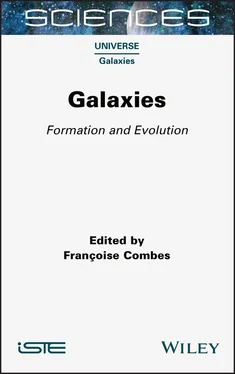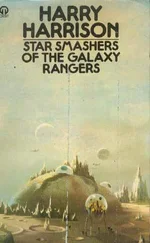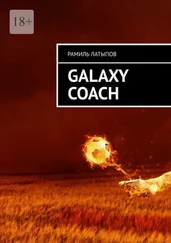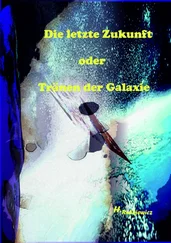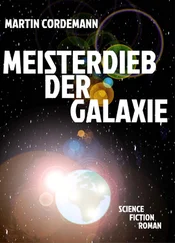Table 1.1. Comparison of classifications
| Galaxy1 |
CVRHS type2 |
Willett et al . 2013 Type 3 |
| NGC 5057 |
(RL)SA(l)0 + |
E(r)r |
| NGC 6116 |
SA(s)a |
Sb2m |
| UGC 10258 |
(R′)SA(s)ab |
Sb2t |
| NGC 2649 |
SA(rs)bc |
Sc2t |
| CGCG 62-1 |
SA(rs)bc |
Sc2l |
| CGCG 91-20 |
SA(s)bc |
Sc2t |
| CGCG 210-9 |
SA(s)bc |
Sc2t |
| UGC 4549 |
SA(rs)cd |
Sc?t |
| IC 2604 |
SA(s)d |
Sc3m |
| iUGC 9243 |
SA(s)dm |
Sc?m |
| NGC 4260 |
SB x (rs)a |
SBc2t |
| NGC 5610 |
(R′)SB(s)ab |
SBc2m |
| UGC 6854 |
SB(s)c pec |
SBc2m(i) |
| NGC 5964 |
SB(s)cd |
SBc2m |
| NGC 5112 |
SB(s)d |
SBc?m |
| UGC 9215 |
SB(s)dm |
Sd?l(i) |
Recent studies of S0 bulges (e.g. Laurikainen et al . 2013; Gao et al . 2018) have shown that while pseudobulges are present in the class, most S0 bulges are classical in nature. As noted by Gao et al . (2018), this strongly rules out any connection between S0s and later-type spiral galaxies (whose bulges are often pseudobulges).
The VRHS actually anticipates a strong relation between S0s and spirals. This is because in the VRHS, inner and outer varieties are carried across the spiral sequence into the S0 domain. The S0 stage sequence, S0 −, S0° and S0 +, is not the same as the spiral sequence, but is based on the appearance of decaying patterns, often in the form of rings and lenses, and sometimes as extremely subtle spiral patterns. This suggests a link between S0s and some galaxies that once were spirals. The main problem is that the S0 stage sequence and the spiral stage sequence are not compatible and cannot be considered “parallel”.
The sophistication of modern numerical simulations has led to an alternative idea for the origin of some S0s. Rather than simply being stripped spirals, many could be the result of mergers of spirals. This is shown by Eliche-Moral et al . (2018), who compare detailed images of S0 galaxies with the results of the GalMer n -body merger simulations (Chilingarian et al . 2010). Eliche-Moral et al . (2018) argue that GalMer major mergers show features that are commonly seen in S0 galaxies, such as ovals and lenses, and also predict a very low bar fraction for S0s. That S0s do indeed have fewer strong bars than spirals was shown by Buta et al . (2010) based on the relative bar torque parameter Qg .
The origin of spiral structure : The most popular idea, known as “density wave” theory, views spiral structure as a rotating pattern through which a galaxy’s stars and interstellar gas clouds must pass (Lin and Shu 1964; Toomre 1977; for a more recent review, see Dobbs and Baba 2014). The arms are not material objects, always made of the same stars, but are waves of density where stars and gas clouds experience a temporary “slowdown”. It is thought that gas compression in the arms could lead to the enhanced star formation often seen in spiral arms.
Spiral patterns can be leading or trailing in their sense of winding. A leading spiral opens into the direction of rotation, while a trailing spiral opens opposite the direction of rotation. Studies of extinction in tilted spirals shows that trailing arms are the rule (e.g. de Vaucouleurs 1958); leading spirals are very rare but do exist (e.g. Buta et al . 2004). A mechanism in density wave theory known as “swing amplification” was identified by Toomre (1981) as a possible way of explaining the long-lived nature of some spirals. The idea uses a combination of differential rotation, epicyclic theory and self-gravity to “swing” a weak leading spiral instability into a much stronger trailing spiral, and explains the preponderance of trailing spiral patterns.
Although density wave theory could account for the velocity perturbations across spiral arms (e.g. Visser 1980), and also could be used to determine spiral pattern speeds (Roberts et al . 1975), the theory left open the question of the origin of spiral structure and the impact of a spiral on the evolution of a galaxy. Attention turned to a search for driving mechanisms, which led to a focus on bars and companions. Bars especially became primary features for affecting the secular evolution of galaxies, because a bar can drive gas into the center of a galaxy and build up what is known as a “pseudobulge”, or bulge made of disk material. Based on passive orbit studies, it was concluded that secular evolution primarily affects the interstellar gas distribution, and likely can only change a galaxy of intermediate type by at most one Hubble stage interval (e.g. stage Sbc to Sb) during a Hubble time.
Kormendy (1979) and Kormendy and Norman (1979) brought attention to the role of bars in driving galactic secular evolution. Kormendy and Norman (1979) identified bars as the likely driving mechanism for what they referred to as “global” spiral patterns, i.e. well-defined spirals that extend across an entire galactic disk. If not a bar, then the perturbing effects of a close companion may also drive a density wave spiral. However, there are relatively isolated non-barred galaxies with strong global spiral patterns; Figure 1.27shows four examples from Buta et al . (2019).
Although global spirals are the best-known patterns in galaxies, many galaxies show spiral structure that cannot be called “global”. This is because their patterns are mainly in the form of disconnected pieces or ill-defined spirals, called flocculent (Elmegreen 1981). Such spirals have been interpreted in terms of star-forming complexes sheared by differential rotation into short spiral arcs (Gerola and Seiden 1978). Dobbs et al . (2018) compare numerical simulations with the ill-defined arms of M33, and conclude that the arms form as a result of gravitational instabilities in the stellar and gaseous distributions, coupled with a high amount of stellar feedback.
Dobbs and Baba (2014) summarize the general view of spiral structure today: “With the possible exception of barred galaxies, spiral arms are transient, recurrent, and initiated by swing-amplified instabilities in the disk”.
The origin of bars in spiral galaxies : The general idea has been that bars form through a natural process known as the “bar instability”. This is the tendency for an initially axisymmetric but cold stellar disk to naturally form a bar (Hohl 1971). Numerical simulations showed that bars develop in systems where the bulk of the kinetic energy is in the form of ordered motions, i.e. in a rotating disk-shaped galaxy (e.g. Miller and Smith 1979).
Gadotti (2004) argues that while this mechanism seems likely for spirals, it may not be the origin of bars in S0 galaxies because these tend to be found in a cluster environment and have a higher relative abundance of classical bulges (as opposed to pseudobulges). The light-deficient regions around some bars suggest a mechanism where a bar forms at the expense of the disk (Gadotti and de Souza 2003a; Kim et al . 2016).
The origin of galactic rings : The general view is that the vast majority of galaxy rings are associated with orbital resonances in galactic disks. A resonance ring is a feature that can, on the basis of morphology and other characteristics, such as star formation, be linked to a specific orbital resonance with a bar, oval or spiral density wave. The idea of a resonance ring first appeared in discussions of density wave theory (for example, Lin 1970), but it was the modeling of barred galaxies that led to a better understanding of these features (Schwarz 1981, 1984).
Читать дальше
